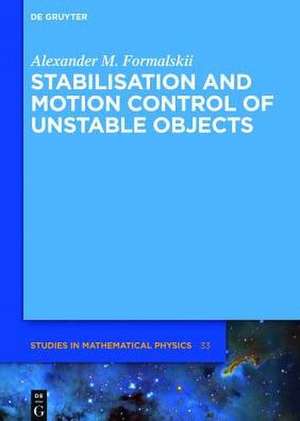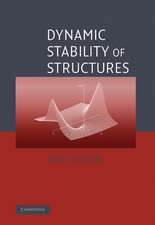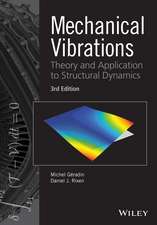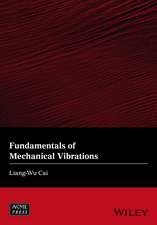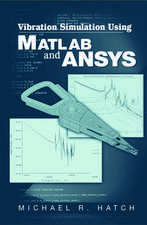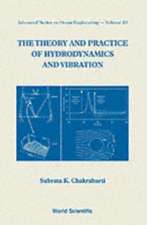Stabilisation and Motion Control of Unstable Objects: De Gruyter Studies in Mathematical Physics, cartea 33
Autor Alexander M. Formalskiien Limba Engleză Hardback – 2 noi 2015
Din seria De Gruyter Studies in Mathematical Physics
- 9%
 Preț: 1038.23 lei
Preț: 1038.23 lei -
 Preț: 247.77 lei
Preț: 247.77 lei - 23%
 Preț: 984.75 lei
Preț: 984.75 lei - 23%
 Preț: 1151.92 lei
Preț: 1151.92 lei - 23%
 Preț: 1645.11 lei
Preț: 1645.11 lei - 23%
 Preț: 1545.00 lei
Preț: 1545.00 lei - 23%
 Preț: 975.30 lei
Preț: 975.30 lei - 23%
 Preț: 1646.44 lei
Preț: 1646.44 lei - 23%
 Preț: 1867.38 lei
Preț: 1867.38 lei - 23%
 Preț: 1537.16 lei
Preț: 1537.16 lei - 23%
 Preț: 1543.37 lei
Preț: 1543.37 lei - 9%
 Preț: 983.47 lei
Preț: 983.47 lei - 23%
 Preț: 1646.58 lei
Preț: 1646.58 lei - 23%
 Preț: 1533.02 lei
Preț: 1533.02 lei - 23%
 Preț: 1800.80 lei
Preț: 1800.80 lei - 23%
 Preț: 1543.67 lei
Preț: 1543.67 lei - 23%
 Preț: 1153.85 lei
Preț: 1153.85 lei - 23%
 Preț: 1910.97 lei
Preț: 1910.97 lei - 23%
 Preț: 877.28 lei
Preț: 877.28 lei - 23%
 Preț: 1368.28 lei
Preț: 1368.28 lei - 23%
 Preț: 1434.84 lei
Preț: 1434.84 lei - 23%
 Preț: 1542.79 lei
Preț: 1542.79 lei - 23%
 Preț: 1535.66 lei
Preț: 1535.66 lei - 23%
 Preț: 1651.79 lei
Preț: 1651.79 lei - 23%
 Preț: 1435.42 lei
Preț: 1435.42 lei - 23%
 Preț: 1436.76 lei
Preț: 1436.76 lei - 27%
 Preț: 912.78 lei
Preț: 912.78 lei - 27%
 Preț: 1009.60 lei
Preț: 1009.60 lei - 27%
 Preț: 916.08 lei
Preț: 916.08 lei - 27%
 Preț: 916.08 lei
Preț: 916.08 lei - 27%
 Preț: 715.70 lei
Preț: 715.70 lei - 27%
 Preț: 773.24 lei
Preț: 773.24 lei - 27%
 Preț: 916.08 lei
Preț: 916.08 lei
Preț: 1371.97 lei
Preț vechi: 1781.78 lei
-23% Nou
262.56€ • 285.10$ • 220.55£
Carte tipărită la comandă
Livrare economică 22 aprilie-06 mai
Specificații
ISBN-10: 3110375826
Pagini: 255
Ilustrații: 83 schw.-w. u. 5 farb. Abb.
Dimensiuni: 170 x 240 x 20 mm
Greutate: 0.57 kg
Editura: De Gruyter
Colecția De Gruyter
Seria De Gruyter Studies in Mathematical Physics
Locul publicării:Berlin/Boston
Notă biografică
Alexander Formalskii, Lomonosov State University, Moscow, Russia.
Cuprins
Preface Chapter 1. Devices Containing One-Link Pendulum § 1. Physical pendulum with fixed suspension point 1. Motion equations 2. Controllability domain 3. Maximization of attraction domain 4. Delay in feedback loop 5. Nonlinear control 6. Controllability domain for nonlinear model § 2. Pendulum with suspension point located at the center of a wheel 1. Motion equations 2. Controllability domain 3. Maximization of attraction domain 4. Nonlinear control § 3. Pendulum with flywheel 1. Design of the pendulum with flywheel 2. Motion equations 3. Local stabilization of the pendulum in the upper unstable equilibrium 4. Damping of the flywheel angular speed 5. Rocking and damping of the pendulum 6. Transferring the pendulum from the lower equilibrium to the upper one 7. Numerical study 8. Experiments § 4. Wheel rolling control using a pendulum 1. Mathematical model of the device 2. Steady motions 3. Stability of steady motions § 5. Optimal rocking and damping of the swing 1. On design of optimal feedback control for second-order systems 2. Mathematical model of the swing 3. Maximization of the swing amplitude 4. Minimization of the swing amplitude 5. Control of the swing with consideration of aerodynamic resistance and dry friction § 6. Pendulum control with minimal energy cost 1. Energy cost estimation 2. Transferring the pendulum to the unstable equilibrium 3. Transferring the pendulum to the stable equilibrium Chapter 2. Two-link Physical Pendulum § 7. Local stabilization of inverted pendulum with one control torque 1. Mathematical model of the pendulum 2. Linearized model 3. Controllability domains 4. Feedback control design, maximization of the attraction domain 5. Numerical study § 8. Optimal control design of two-link pendulum rocking and damping 1. Mathematical model 2. Reduced angle 3. Optimal control for rocking the pendulum 4. Optimal control for damping the pendulum 5. On transferring the pendulum from the lower equilibrium to the upper one § 9. Global stabilization of inverted pendulum with control applied at the hinge between links 1. Mathematical model 2. Cascade form of dynamics equations 3. Control for rocking the pendulum 4. Tracking of desired inter-link angle variation 5. Local stabilization of the inverted pendulum 6. Numerical study § 10. Global stabilization of the inverted pendulum with control applied at the suspension point 1. Mathematical model 2. Pendulum rocking 3. Straightening of the pendulum 4. Linear model, local stabilization 5. Numerical study § 11. Multilink pendulum on a movable base 1. Multilink pendulum on a wheel 2. One-link pendulum on a wheel 3. Global stabilization of inverted pendulum 4. Controllability domain 5. Design of time-optimal trajectories 6. Pendulum on a cart 7. Decrease of frequencies under imposed constraint Chapter 3. Ball on a Beam § 12. Stabilization of a ball on a rectilinear beam 1. Mathematical model of the system 2. Linearized model 3. Feedback control synthesis 4. Numerical study § 13. Stabilization of a ball on a circular beam 1. Mathematical model 2. Linearized model 3. Feedback control 4. Numerical study Chapter 4. Gyroscopic Stabilization of Robot-Bicycle § 14. Designs of two bicycle types 1. Bicycle with one steering wheel 2. Bicycle with two steering wheels 3. Gyroscopic stabilizer 4. Equations of bicycle roll oscillations § 15. Control law for stabilizing bicycle in the upright position 1. Measurement of bicycle roll angle with accelerometers 2. Bicycle motion along a straight line 3. Bicycle motion along a circular line 4. Numerical and experimental study References
